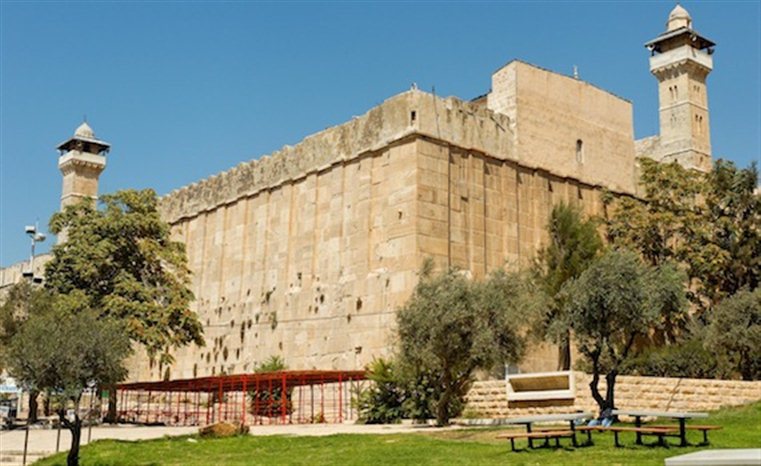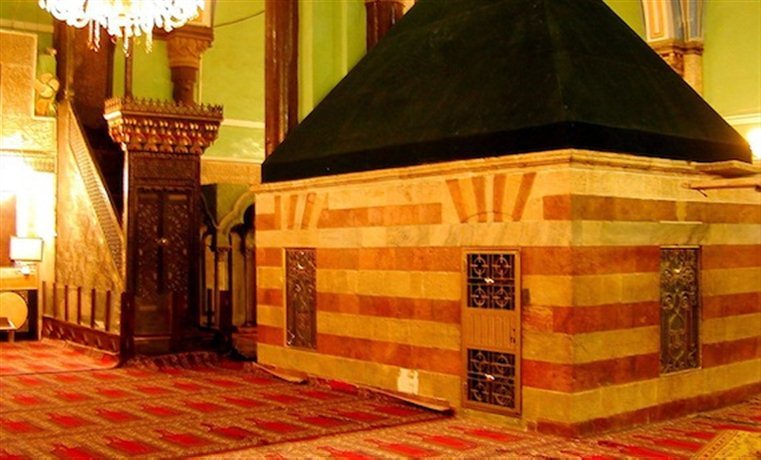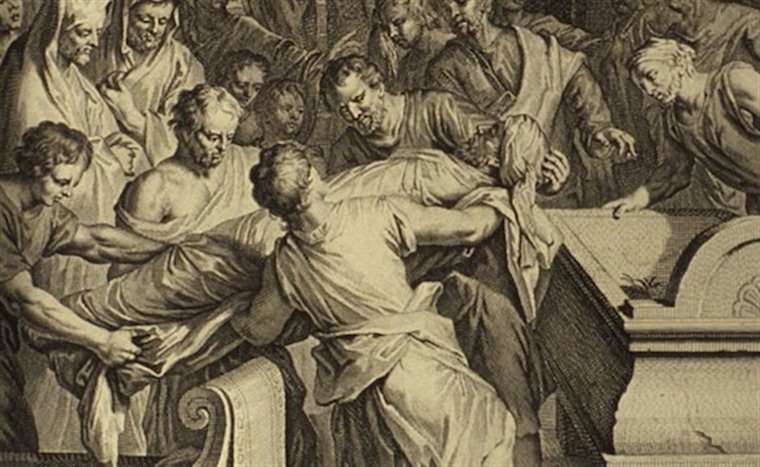4. Hebron—The Cave Of Machpelah Stands As A Testimony Of Faith
Towering like a fortress over the shoddy buildings that surround it, the ancient structure in Hebron covers a site sacred to Jews, Christians, and Muslims.

Photo: The building that covers the “Cave of the Patriarchs” at Machpelah in Hebron, courtesy of BiblePlaces.com
In elevation, Hebron stands taller than even Jerusalem.
And other than the Temple Mount itself, no other place remains as revered to peoples whose hopes and faiths could not be more diverse.
Few other places offer such a powerful lesson in faith for those of us still drawing a breath.
A Cave That Is A Grave
The building covers the Cave of Machpelah, the place the Bible refers to as the burial ground for the Hebrew patriarchs and their wives (Genesis 23:19; 25:9; 49:30; 50:13). In the first century BC, Herod the Great constructed a massive wall around the cave—a beautiful edifice with construction techniques similar to those of the Temple Mount.
As with Jerusalem’s Western Wall Tunnel, the massive size of the foundation stones surrounding Machpelah inspires awe to all who see them. With Herod’s signature relief framing the edges, each stone sits slightly offset from the one beneath it, providing the optical illusion of both loftiness and grandeur. Inside the wall, the pavement also dates to Herod’s day.

Photo: Huge foundation stones at Machpelah, courtesy of BiblePlaces.com
As centuries passed, the four sides of the structure would include porticoes, and a partition divided the different faiths that came to visit. The Augustinian Canons rediscovered the Cave of Machpelah below Herod’s structure in AD 1119. For a time, anyone could visit the underground area. But by the end of the 13th century, no one from the general public was allowed in the cave.
Inside, Faiths Collide
The monochrome exterior blends with its drab surroundings. But inside the colors and architecture vary wildly—betraying the hodgepodge of intentions imposed on it throughout the centuries. The Crusader ceiling looks beautiful, as does the ornate wooden pulpit Saladin donated in 1191 after burning Ashkelon. Today, the magnificent pulpit sits beside Isaac’s cenotaph (a tomb marker or monument).

Photo: Isaac’s cenotaph and the 11th century pulpit, courtesy of BiblePlaces.com
Because the cave remains inaccessible, cenotaphs stand to commemorate the patriarchs buried below. Visitors can see the cenotaphs of Abraham, Isaac, Jacob, Rebecca, Leah, and Sarah. A padlocked trap door covers a shaft that descends to the Cave of Machpelah below where the patriarchs lay.
It’s ironic that the only part of the land Abraham actually owned—though God promised him all of it—was this burial plot in Hebron. In fact, Abraham lived for sixty-two years in the Promised Land before owning any of it. Abraham haggled for the purchase and ultimately paid 400 silver shekels for the cave. Like many pilgrims in Israel today, the result of haggling is still paying way too much!
A Faith That Lasts Beyond The Grave
When God called Abraham to leave his homeland and his idols in order to follow the true God, the old man walked away from everything familiar (Genesis 12:1-4; Joshua 24:2-3). This much is true:
· Abraham and his many descendants would die before ever receiving all God promised. “All these died in faith, without receiving the promises,” the book of Hebrews reminds us, “having confessed that they were strangers and exiles on the earth” (Hebrews 11:13).
· Either God reneged on His promise to Abraham, or the promise proves—and even demands—a resurrection.

Photo: Isaac and Ishmael lay Abraham to rest. By Gerard Hoet (1648-1733), 1728 Figures de la Bible, Public domain.
Both Isaac and Ishmael laid their father Abraham to rest at this site (Genesis 25:9). Their diverging lines of descendants share a common lineage to Abraham—but today they struggle to share even the same site that commemorates him. As a result of the unpredictable—and even volatile—tensions between the Muslims and Jews who share the modern building, visitors would do well to predetermine whether or not a visit to Hebron is safe.
A Lesson From Abraham’s Act
When I think of Hebron, I reflect on Abraham’s willingness to walk away from everything comfortable and familiar and to trust God for an unknown future. When Abraham acquired the small piece of land in which to bury Sarah, he demonstrated his faith in the Lord’s covenant to give him all the land one day.
Abraham’s purchase at Machpelah showed that we lose nothing of God’s promises in death, because those promises extend beyond the grave.
Related Topics: Devotionals, History, Archaeology
TOPIC: The Path of Abraham (Coming Soon)
Tel Harran (Summer 2007)


A Well in Harran (Summer 2007)

Hevron: Ma’Arat HaMachpela
TOPIC: The Path of Abraham (Coming Soon)

Tel Harran (Summer 2007)


A Well in Harran (Summer 2007)

Hevron: Ma’Arat HaMachpela
No comments:
Post a Comment